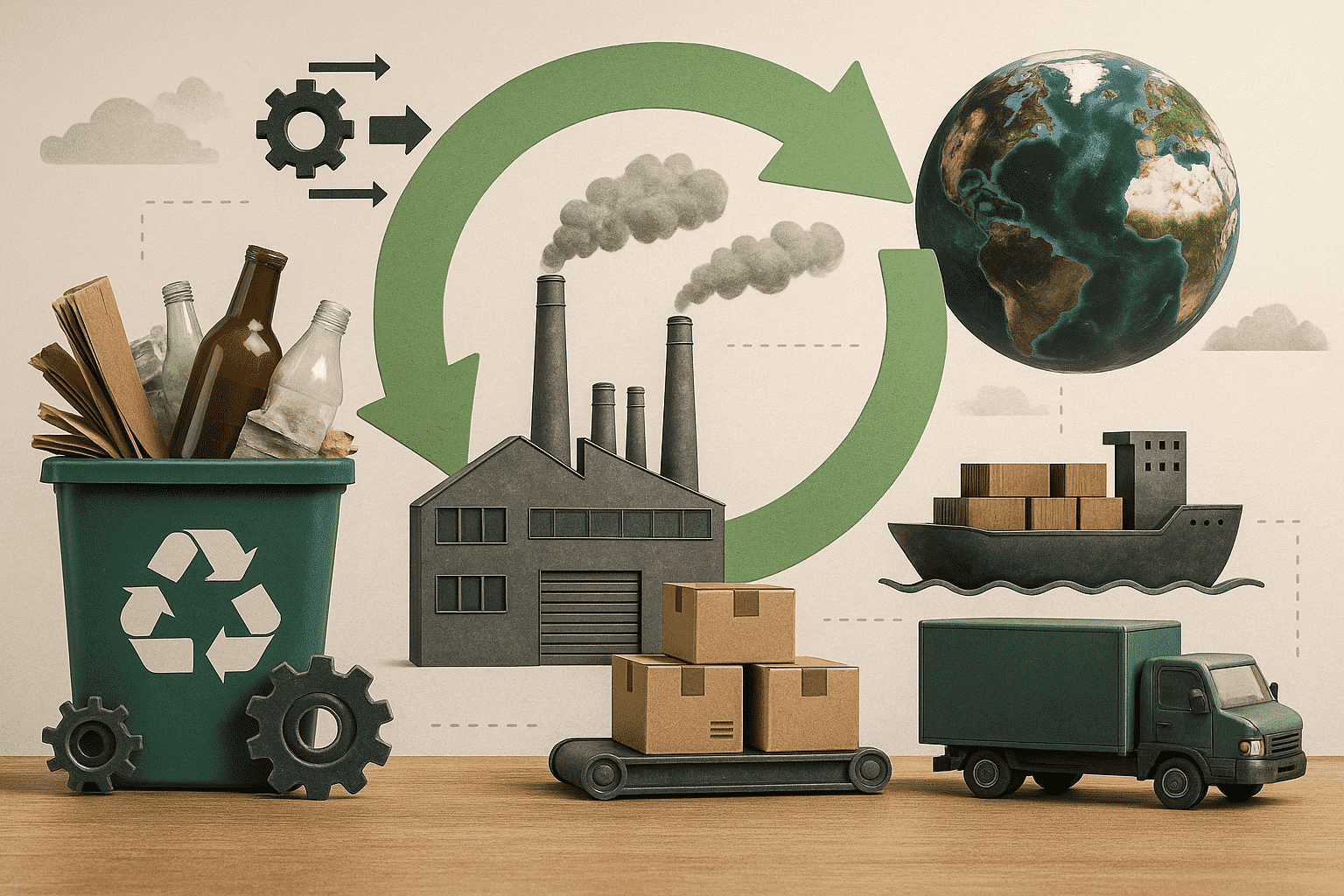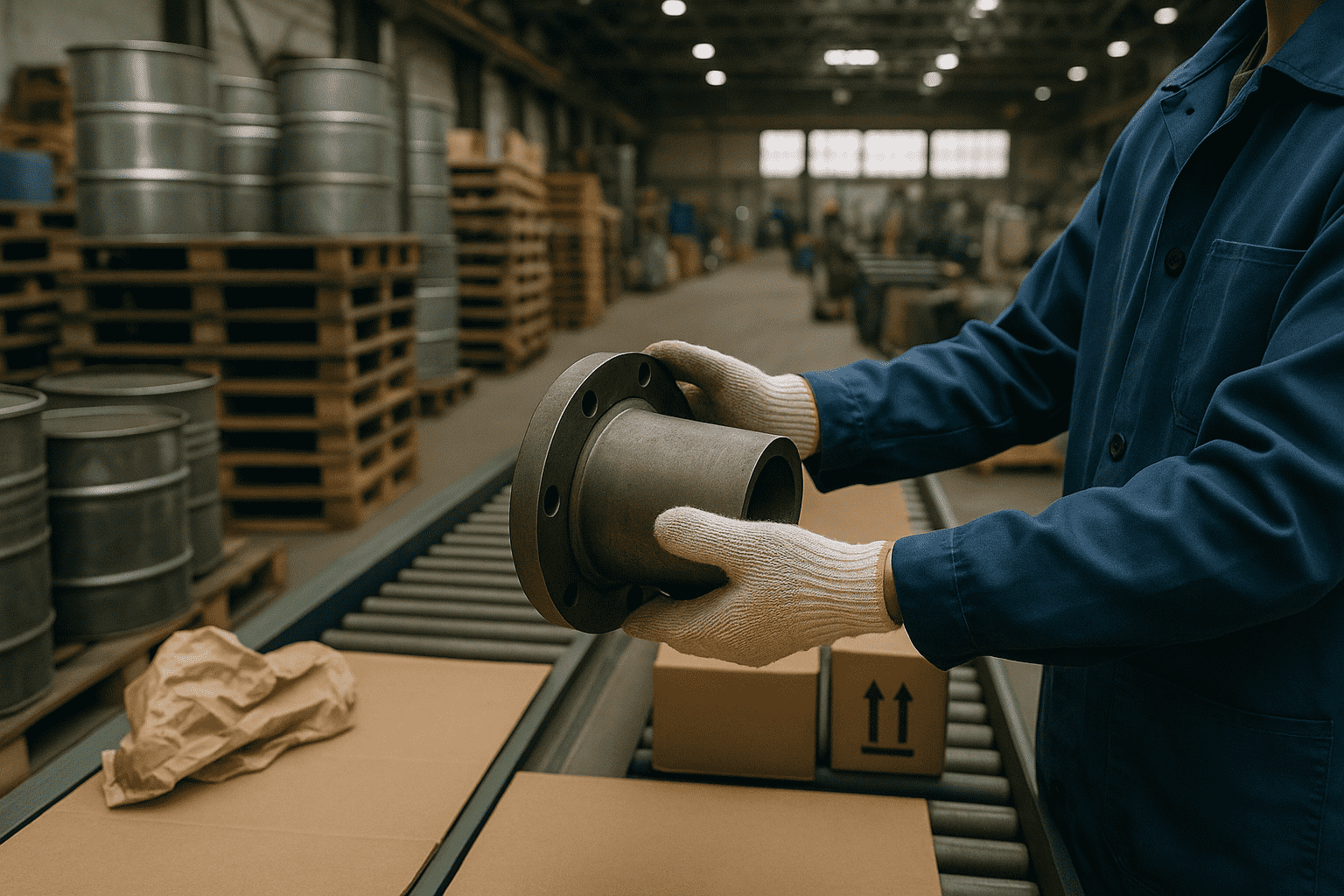Industrial Upcycling: What It Is & How to Get Started

The manufacturing industry produces about 1,800 pounds of waste for every person employed. This staggering figure highlights the immense volume of waste generated in industrial operations.
Industrial upcycling offers a strategic solution to this challenge by transforming surplus materials, scrap, or by-products into higher-value products or inputs. Unlike traditional recycling, which often degrades material quality, upcycling retains or enhances the original material's value, contributing to sustainability and resource efficiency.
In this guide, we'll explore the principles of industrial upcycling, its benefits for manufacturers and supply chain leaders, and practical steps to implement upcycling initiatives in your operations.
What Is Industrial Upcycling?

Industrial upcycling is the practice of transforming surplus, scrap, or by-product materials from manufacturing into new forms that hold higher value or utility than their original state. Unlike basic recycling, which often downgrades material quality, upcycling preserves or enhances performance, extends lifecycle, and reduces overall waste in your operations.
You can approach industrial upcycling in three proven ways:
- New Products
Convert industrial surplus or process by-products into entirely new, marketable products. For example, repurposing scrap metal into custom machine components or using waste plastic to produce durable pallets.
- Designs
Integrate upcycled materials directly into product design. This can mean designing with modular components that incorporate reclaimed parts or specifying upcycled content in product specifications for both new builds and retrofits.
- Processes
Redefine production workflows to capture, separate, and reintegrate by-products or offcuts into existing or parallel manufacturing streams—either internally within your own operations or externally to other industrial streams. This approach drives material efficiency, supports closed-loop manufacturing, and significantly reduces your landfill footprint.
How Can You Contribute to Industrial Upcycling?

1. Audit Your Surplus and Waste Streams
Start by conducting a comprehensive audit of all surplus materials, scrap, and by-products generated across your operations. Focus on identifying high-volume, high-value streams that represent the greatest potential for upcycling.
Engage cross-functional teams—operations, environmental health and safety (EHS), and procurement—to capture accurate data and uncover untapped material flows. A collaborative, data-driven audit establishes a clear foundation for selecting upcycling opportunities that deliver measurable value.
2. Build Partnerships
You can strengthen your upcycling impact by building partnerships both inside and outside your organization. Start by identifying streams of industrial surplus or scrap inventory from your operations and look for collaboration opportunities with other manufacturers facing similar challenges.
Engage with upcycling experts who can facilitate linkages with industrial buyers. Secure offtake agreements with companies seeking upcycled materials, creating reliable end markets for your outputs. By proactively connecting with partners, you expand your upcycling potential and help drive industrial circularity and a culture of industrial resource efficiency.
3. Offer Material Streams to Medium and Small-Scale Manufacturers
One powerful way you can advance industrial upcycling is by making your surplus or by-product material streams available to medium and small-scale manufacturers.
Rather than sending off-cuts, specialty plastics, or unique metal alloys to landfill or low-value recycling, establish a program to supply these materials to local and regional businesses that can upcycle them into new products.
This approach not only diverts waste from landfills but also creates new opportunities for smaller manufacturers to innovate and grow. By proactively sharing your surplus, you support local supply chains, foster industrial resilience, and strengthen your company’s position as a leader in sustainable manufacturing.
4. Joint Ventures with Waste-to-Product Specialists
Lastly, you can also accelerate your impact on industrial upcycling by forming joint ventures with companies that specialize in converting industrial waste into new, marketable products.
Partnering with waste-to-product specialists brings technical expertise and established processes for transforming challenging materials and components into valuable inputs for other industries.
This collaborative approach lets you share risk, pool resources, and expand market reach while maximizing the value recovered from your surplus. By leveraging joint ventures, you scale upcycling solutions faster and demonstrate a serious, long-term commitment to circular manufacturing.
Conclusion
Industrial upcycling transforms surplus materials, scrap, and by-products into higher-value products, extending the life of resources and reducing waste.
By identifying high-volume waste streams, designing efficient upcycling workflows, and engaging cross-industry partnerships, you can convert what was once a disposal cost into a strategic asset.
Contact Amplio for strategic guidance and access to a network of industrial buyers and sellers. Leverage our platform to match your surplus and idle inventory with partners ready to upcycle these materials, driving sustainability, cutting costs, and unlocking new revenue streams.